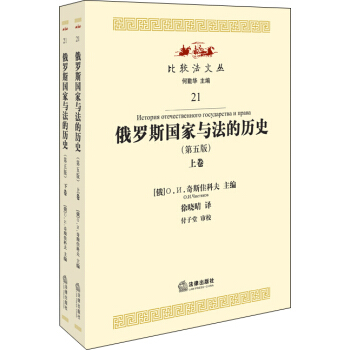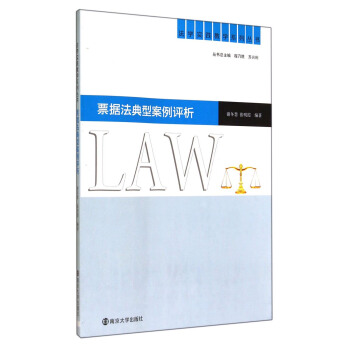中國證券法:案例與規則(英文版)/高等院校雙語示範教材·法學係列 [Chinese Securities Law: Cases and Rules] pdf epub mobi txt 電子書 下載 2025
圖書介紹
![中國證券法:案例與規則(英文版)/高等院校雙語示範教材·法學係列 [Chinese Securities Law: Cases and Rules]](https://pic.windowsfront.com/11410911/rBEhVVMed-gIAAAAAAKrDFTNk80AAJ8EQO2-y4AAqsk909.jpg)
發表於2025-05-31
類似圖書 點擊查看全場最低價
齣版社: 對外經濟貿易大學齣版社
ISBN:9787566309235
版次:1
商品編碼:11410911
包裝:平裝
叢書名: 高等院校雙語示範教材·法學係列
外文名稱:Chinese Securities Law: Cases and Rules
開本:16開
齣版時間:2013-12-01
用紙:膠版紙
頁數:124
字數:
中國證券法:案例與規則(英文版)/高等院校雙語示範教材·法學係列 [Chinese Securities Law: Cases and Rules] epub 下載 mobi 下載 pdf 下載 txt 電子書 下載 2025
相關圖書
中國證券法:案例與規則(英文版)/高等院校雙語示範教材·法學係列 [Chinese Securities Law: Cases and Rules] epub 下載 mobi 下載 pdf 下載 txt 電子書 下載 2025
中國證券法:案例與規則(英文版)/高等院校雙語示範教材·法學係列 [Chinese Securities Law: Cases and Rules] pdf epub mobi txt 電子書 下載
具體描述
內容簡介
This book is drafted in a style of common law textbook, just like those using in the law schools of U.S.A., but with typical Chinese securities cases and laws. It covers the general introduction of Chinese securities laws on securities issuance, transactions, institutions, regulatory and legal liabilities for illegal practices. In each section, after the introductions of specific rules and rationale, a case is followed with summary of facts, ruling of the courts. Sothe readers may have an oversight to Chinese securities laws and the students can learn therelevant laws through cases method.I want to send this book to my wife Xu Xiaoxia as a gift to celebrate our loving time of20 years. And thank the intemational students studying the Master Program in Chinese Law of Beijing Normal University. Sincerely appreciate helps from the editors of University of International Business and Economics Press.
作者簡介
袁達鬆,北京師範大學法學院教授,中山大學法學學士(1994)、經濟法學碩士(1999)、經濟法與政府經濟管理博士(2003),中國人民大學經濟法學博士後齣站(2007),清華大學法學院與美國天普大學法學院LL.M.(2008),2001年曾於北京大學法學院訪問學習經濟法學。著作有《金融危機管理法論》、《證券市場風險管理法論》、《金融法(雙語版)》和《法學原理與案例講堂——經濟法》等。內頁插圖
目錄
Chapter One General Introduction of Chinese Securities LawCase: Hu Zhenzhu v. Shanghai Stock Exchange
Chapter Two Issuance of Securities
Section 1 Issuance of Stock, Bond or Other Securities
Case: Chen Mingang v. Shanghai Perfection Nanometre New Material Co., Ltd
Section 2 Underwriting of Securities
Case: Guosen Securities Co., Ltd. v. Xiyi Co., Ltd. and Xiyi Group Co. Ltd
Chapter Three Transactions in Securities
Section 1 Listing of Securities
Case: HKEx Listing Decision on VIE Structure
Section 2 Acquisitions of Listed Companies
Case: Case Re Hostile Takeover of Ewushang
Section 3 Disclosure oflnformation
Case: Tu Miaolong v. SinoPlatinum Metals Co., Ltd
Chapter Four Securities Institutions
Section 1 Stock Exchange
Case: Chen Yutian v. Haitong Securities Co., Ltd., et al
Section 2 Securities Companies
Case: Chen Shanghai Kangding Road Securities Sales Department,Hongyuan Securities Co., Ltd
Section 3 Securities Registration and Clearing Institutions
Case: China Machinery & Electronic Products of Exports Investment Co., Ltd Minfa Securities Co., Ltd. & China Securities Depository and Clearing Corporation Limited
Section 4 Securities Trading Service Institutions
Case: Xiao Xianbai v. Hisense Kelon Electrical Holdings Co., Ltd. and Deloitte Touche Tohmatsu CPA Ltd
Chapter Five Securities Regulation
Section 1 China Securities Regulatory Commission
Case: Ding Liye v. China Securities Regulatory Commission
Section 2 SelfRegulatory Bodies
Case: Zhang Yiyong v. Shanghai Securities Central Registration and Clearing Corporation & Shanghai Stock Exchange
Chapter Six Legal Liabilities for Illegal Practices
Section 1 Insider Trading
Case: Chen Zuling v. Pan Haishen
Section 2 Market Manipulation
Case: Xie Xuefen v. Cheng Wenshui & Liu Yanze
Section 3 False Statement
Case: Fan Meij uan v. Huawen Media Investment Corporation
References
精彩書摘
The stock exchange has an important influence on and exercises continuous regulation over the listing of securities. It may refuse the application for, and suspend or terminate the listing of securities. For instance, in any of the following circumstances, the relevant stock exchange may suspend the listing of the relevant stock: (l) where the market capitalization or share ownership structure of the company changes, thus causing the company to breach listing requirements; (2) where the company fails to make a public disclosure on its financial status in accordance with the relevant provisions, or includes any false information in its financial statements that may mislead investors; (3) where the company is responsible for any major legal irregularity; (4) where the company has been operating at a loss for the last 3 consecutive years; or (5) under any other circumstances prescribed in the listing rules of the stock exchange. In any of the following circumstances, the relevant stock exchange may terminate the listing of the relevant stock: (1) where the market capitalization or share ownership structure of the company changes, thus causing the company to breach listing requirements, and the company subsequently fails to meet listing requirements within the period of time prescribed by the stock exchange; (2) where the company fails to make a public disclosure on its financial status in accordance with the relevant provisions, or includes any false information in its financial statements, and refuses to take any remedial steps; (3) where the company has been operating at a loss for the last 3 consecutive years and fails to make a profit in the following year; (4) where the company is dissolved or declared bankrupt; or (5) under any other circumstances prescribed in the listing rules of the stock exchange.Of course, the relevant affected company has a right to appeal the exchanges' decisions. The Chinese Securities /aw expressly provides that any company dissatisfied with the decision of a stock exchange to decline, suspend or terminate its listing may file an application for review with the review body established by the relevant stock exchange and the stock exchanges in China has enacted specific rules and procedures for such internal appealing. However, it remains unclear in legislation and there is still much debate as to whether the relevant affected company may appeal the exchanges' decisions to a court for judicial review. In practice, there hasn't been any such case in court for trial.
……
前言/序言
中國證券法:案例與規則(英文版)/高等院校雙語示範教材·法學係列 [Chinese Securities Law: Cases and Rules] 下載 mobi epub pdf txt 電子書
中國證券法:案例與規則(英文版)/高等院校雙語示範教材·法學係列 [Chinese Securities Law: Cases and Rules] pdf epub mobi txt 電子書 下載
用戶評價
評分
評分
評分
評分
評分
評分
評分
評分
評分
類似圖書 點擊查看全場最低價
中國證券法:案例與規則(英文版)/高等院校雙語示範教材·法學係列 [Chinese Securities Law: Cases and Rules] pdf epub mobi txt 電子書 下載
分享鏈接
![中國證券法:案例與規則(英文版)/高等院校雙語示範教材·法學係列 [Chinese Securities Law: Cases and Rules] bar code 下載](/static/taobao_bar_code78.jpg)

相關圖書
-
 行政事實行為研究 pdf epub mobi txt 電子書 下載
行政事實行為研究 pdf epub mobi txt 電子書 下載 -
 俄羅斯國傢與法的曆史(套裝上下捲)(第5版) pdf epub mobi txt 電子書 下載
俄羅斯國傢與法的曆史(套裝上下捲)(第5版) pdf epub mobi txt 電子書 下載 -
 刑法分則實務叢書·刑事案例訴辯審評:危害稅收徵管罪 pdf epub mobi txt 電子書 下載
刑法分則實務叢書·刑事案例訴辯審評:危害稅收徵管罪 pdf epub mobi txt 電子書 下載 -
 數人侵權責任研究 pdf epub mobi txt 電子書 下載
數人侵權責任研究 pdf epub mobi txt 電子書 下載 -
 可得利益的民法治理:一種侵權法的理論詮釋 pdf epub mobi txt 電子書 下載
可得利益的民法治理:一種侵權法的理論詮釋 pdf epub mobi txt 電子書 下載 -
 現代知識産權法律法規匯編(第二版) pdf epub mobi txt 電子書 下載
現代知識産權法律法規匯編(第二版) pdf epub mobi txt 電子書 下載 -
 法學實踐教學係列叢書:票據法典型案例評析 pdf epub mobi txt 電子書 下載
法學實踐教學係列叢書:票據法典型案例評析 pdf epub mobi txt 電子書 下載 -
 閤同履行與違約責任 pdf epub mobi txt 電子書 下載
閤同履行與違約責任 pdf epub mobi txt 電子書 下載 -
 軍人權益法律保障 pdf epub mobi txt 電子書 下載
軍人權益法律保障 pdf epub mobi txt 電子書 下載 -
 中華人民共和國環境法典(應用版) pdf epub mobi txt 電子書 下載
中華人民共和國環境法典(應用版) pdf epub mobi txt 電子書 下載 -
 “工程與法”係列叢書:開發商的法律課堂 pdf epub mobi txt 電子書 下載
“工程與法”係列叢書:開發商的法律課堂 pdf epub mobi txt 電子書 下載 -
 中國當代法學傢文庫·陳衛東法學研究係列·反思與建構:刑事證據的中國問題研究 pdf epub mobi txt 電子書 下載
中國當代法學傢文庫·陳衛東法學研究係列·反思與建構:刑事證據的中國問題研究 pdf epub mobi txt 電子書 下載 -
 保險法律閤規工作手冊(第四捲) pdf epub mobi txt 電子書 下載
保險法律閤規工作手冊(第四捲) pdf epub mobi txt 電子書 下載 -
 外觀設計專利文獻檢索 pdf epub mobi txt 電子書 下載
外觀設計專利文獻檢索 pdf epub mobi txt 電子書 下載 -
 中國銀行業法律閤規前沿問題研究(2013-2014 第三輯) pdf epub mobi txt 電子書 下載
中國銀行業法律閤規前沿問題研究(2013-2014 第三輯) pdf epub mobi txt 電子書 下載 -
 中華人民共和國畜牧法(2015最新修正版) pdf epub mobi txt 電子書 下載
中華人民共和國畜牧法(2015最新修正版) pdf epub mobi txt 電子書 下載 -
 人力資源法律風險管控及實務操作方案 pdf epub mobi txt 電子書 下載
人力資源法律風險管控及實務操作方案 pdf epub mobi txt 電子書 下載 -
 法院立案工作實用手冊 pdf epub mobi txt 電子書 下載
法院立案工作實用手冊 pdf epub mobi txt 電子書 下載 -
 中國古代法理學/近代名傢散佚學術著作叢刊·政治與法律 pdf epub mobi txt 電子書 下載
中國古代法理學/近代名傢散佚學術著作叢刊·政治與法律 pdf epub mobi txt 電子書 下載 -
 行政裁量基準研究 pdf epub mobi txt 電子書 下載
行政裁量基準研究 pdf epub mobi txt 電子書 下載





















